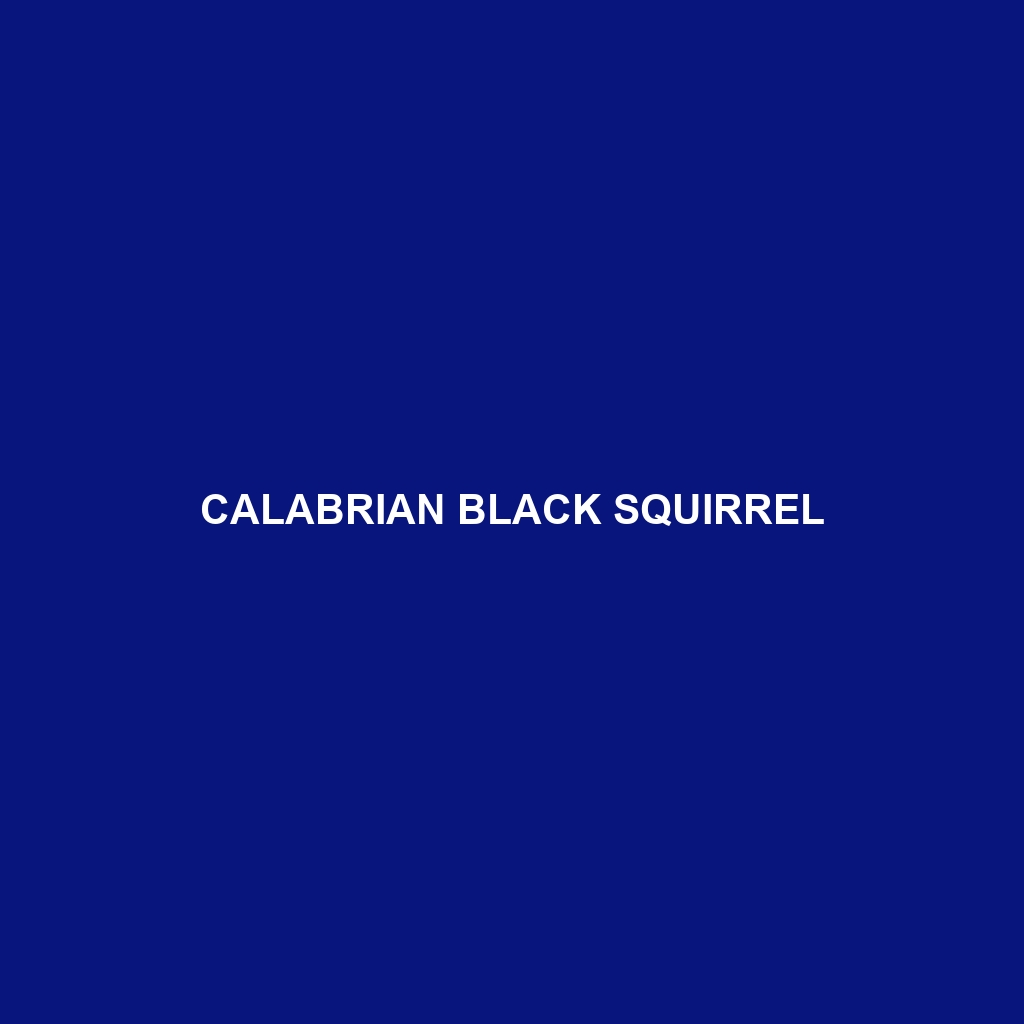Calabrian Black Squirrel
Common Name: Calabrian Black Squirrel
Scientific Name: Sciurus meridionalis
Habitat: The Calabrian Black Squirrel is primarily found in the lush forests of Calabria, Southern Italy. This species thrives in temperate deciduous and mixed forests characterized by a diverse range of trees such as beech, oak, and chestnut. Additionally, it prefers habitats near riverbanks and mountainous areas, which provide ample food sources and shelter.
Physical Characteristics: The Calabrian Black Squirrel is a medium-sized rodent, weighing between 400 to 700 grams and measuring about 25 to 30 cm in length. Its most striking feature is its glossy black fur, which can occasionally exhibit a brownish hue. This species has a bushy tail, sharp claws, and large eyes that enhance its ability to detect predators. The pronounced and large ears offer excellent hearing capabilities.
Behavior: Known for its acrobatic skills, the Calabrian Black Squirrel exhibits playful behavior, often seen leaping between trees and engaging in chasing games. It is diurnal, meaning it is active during the day, and it uses vocalizations, such as chattering sounds, to communicate with fellow squirrels. Typically, this species is solitary but can often be seen foraging with others, especially during the autumn months when food is plentiful.
Diet: The diet of the Calabrian Black Squirrel consists mainly of nuts, seeds, fruit, and fungi, with a particular fondness for acorns, chestnuts, and berries. It plays a vital role in the dispersal of seeds, which contributes to forest regeneration. The Calabrian Black Squirrel utilizes its strong incisors to crack open tough shells, making it well-adapted to forage in its environment.
Reproduction: Calabrian Black Squirrels typically breed twice a year; the breeding seasons are from late winter to early spring and again in late summer. After a gestational period of about 44 days, females give birth to 2 to 5 young. The young are born blind and helpless but grow rapidly, becoming independent around 10 weeks of age. Maternal care is strong, with females diligently protecting their offspring from potential threats.
Conservation Status: The Calabrian Black Squirrel is currently listed as Vulnerable on the IUCN Red List. Habitat loss due to deforestation, urbanization, and climate change are significant threats affecting their populations. Conservation efforts are underway to preserve their natural habitats and promote awareness about their ecological significance.
Interesting Facts: One fascinating aspect of the Calabrian Black Squirrel is its unique ability to adapt its diet based on seasonal availability, showcasing remarkable flexibility. Additionally, unlike many other squirrel species, they have been observed exhibiting caching behavior, where they store food items for later consumption, demonstrating intelligent foraging strategies.
Role in Ecosystem: The Calabrian Black Squirrel plays a crucial role in its ecosystem by acting as a seed disperser, which aids in the regeneration of forests. Through its feeding habits, it helps maintain the health of its habitat and supports the growth of tree species, which in turn benefits a wide variety of other wildlife. Their interactions with plants and other species highlight their importance in ensuring biodiversity and ecological balance within their environment.
